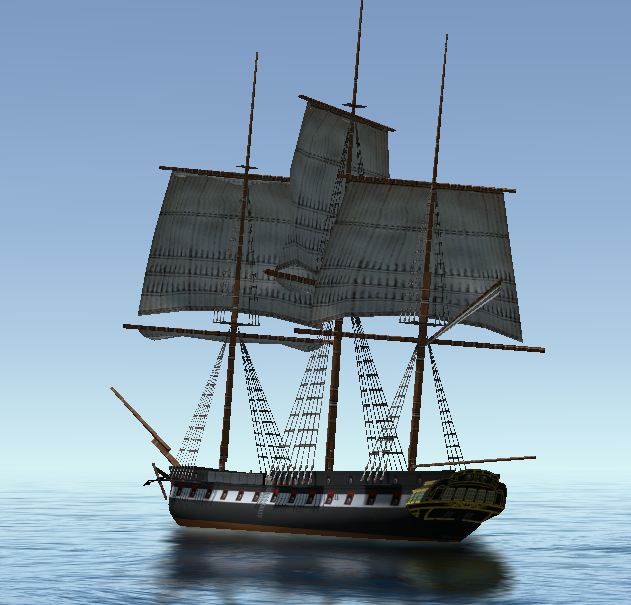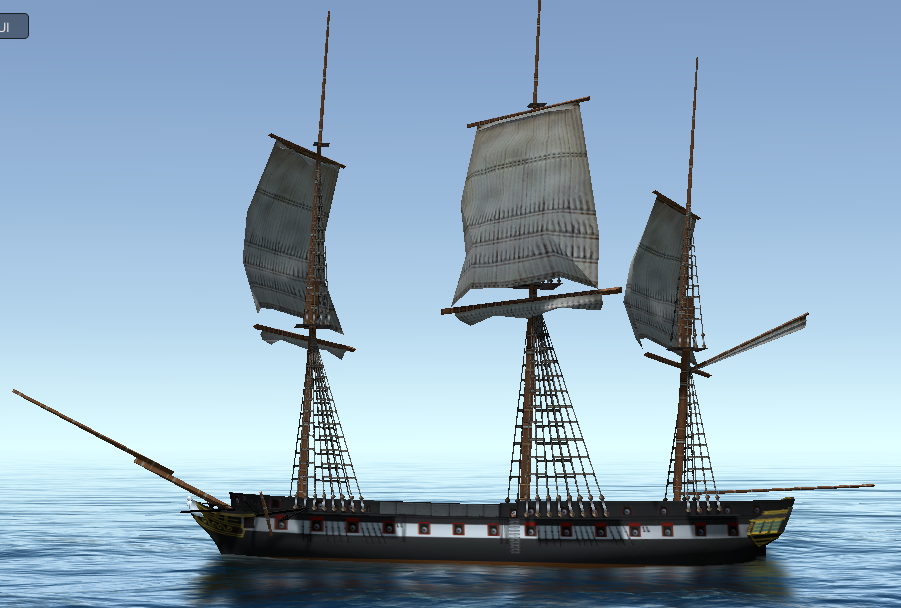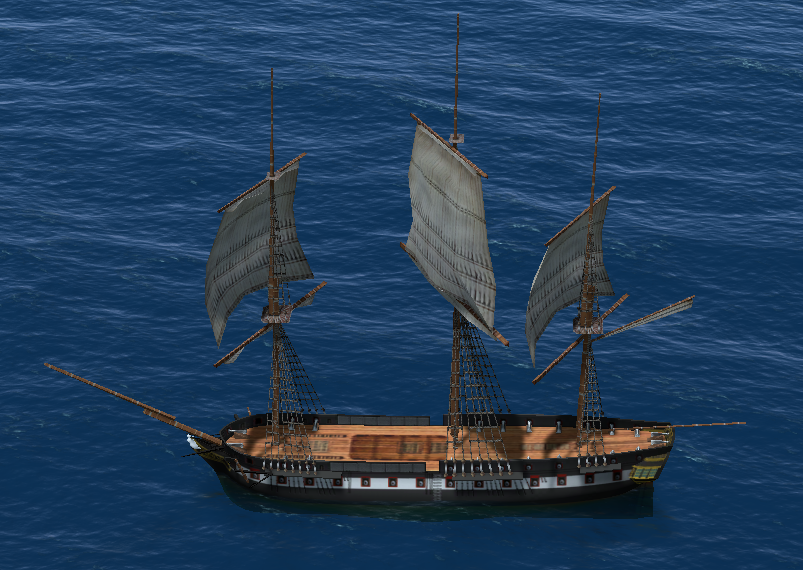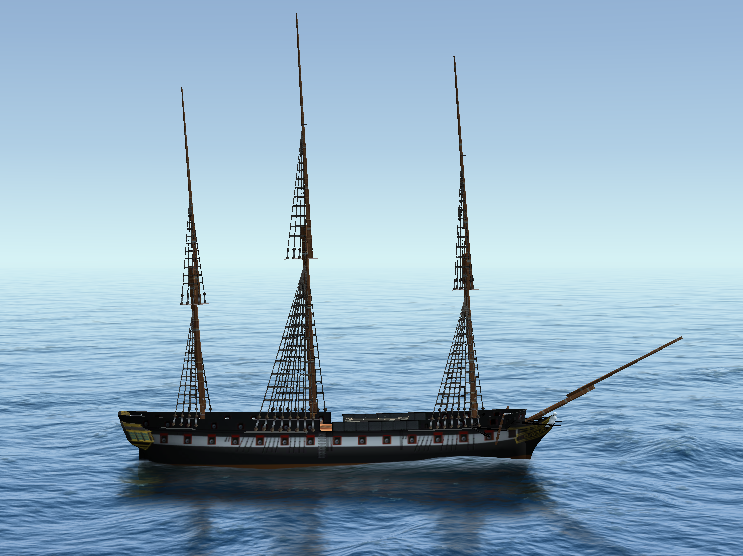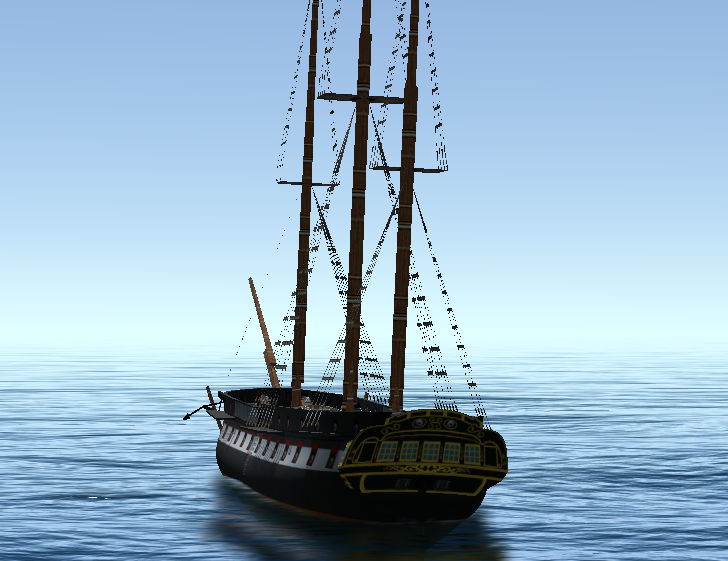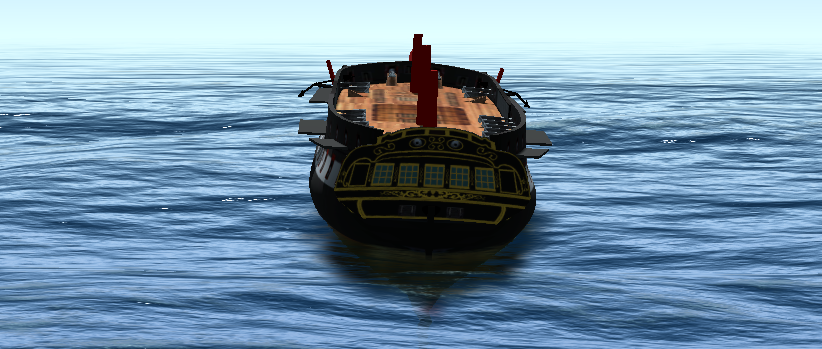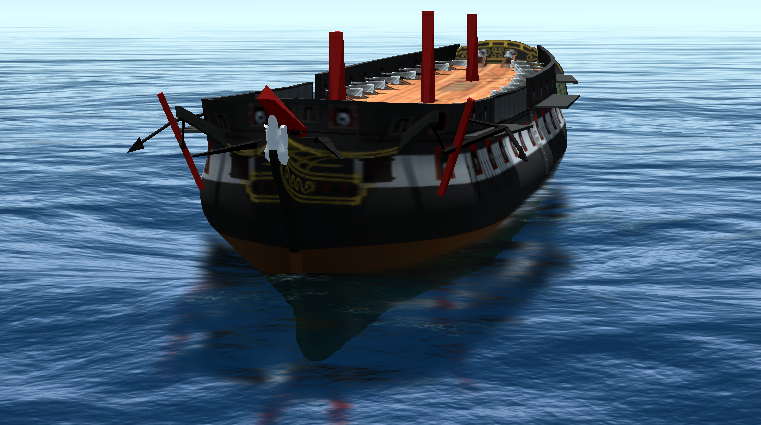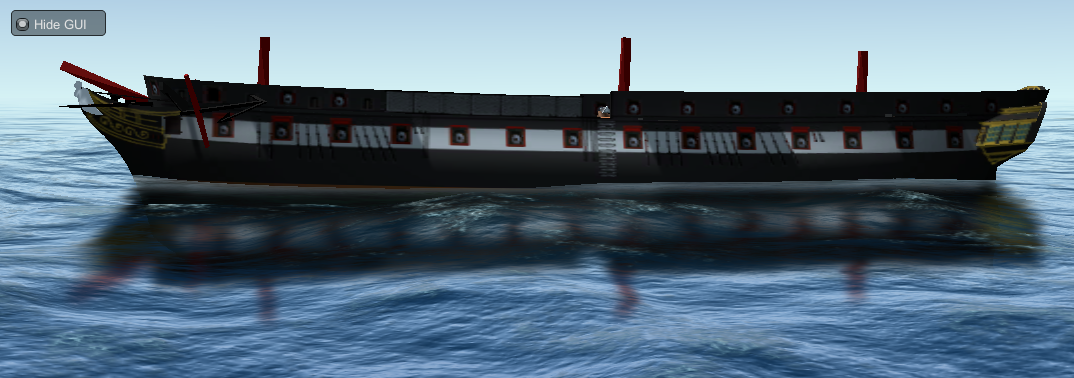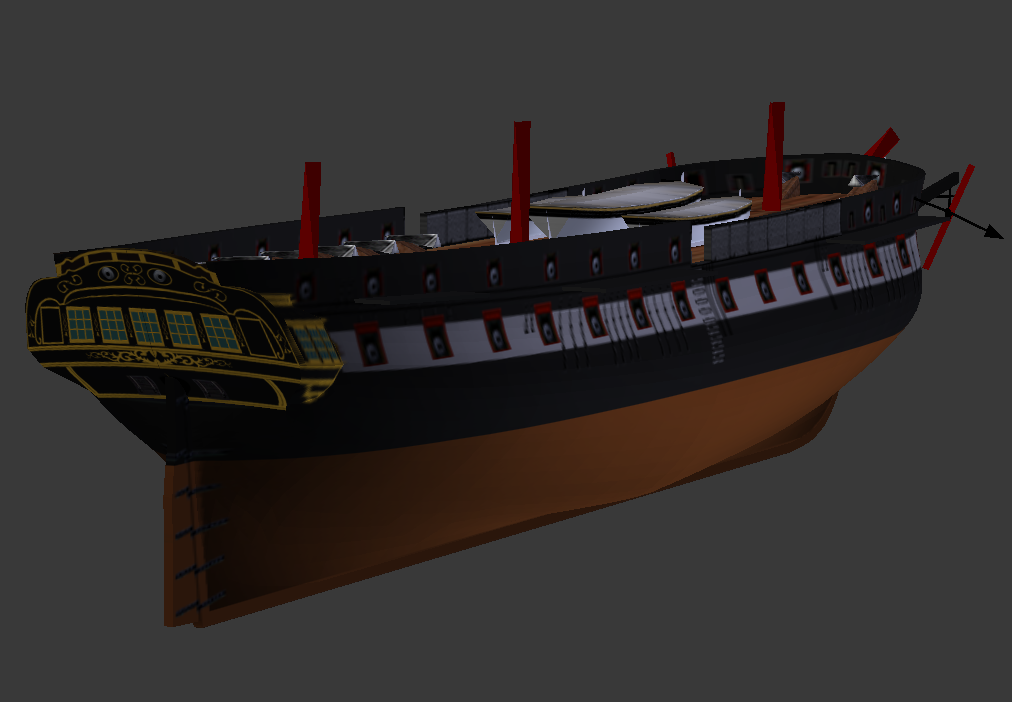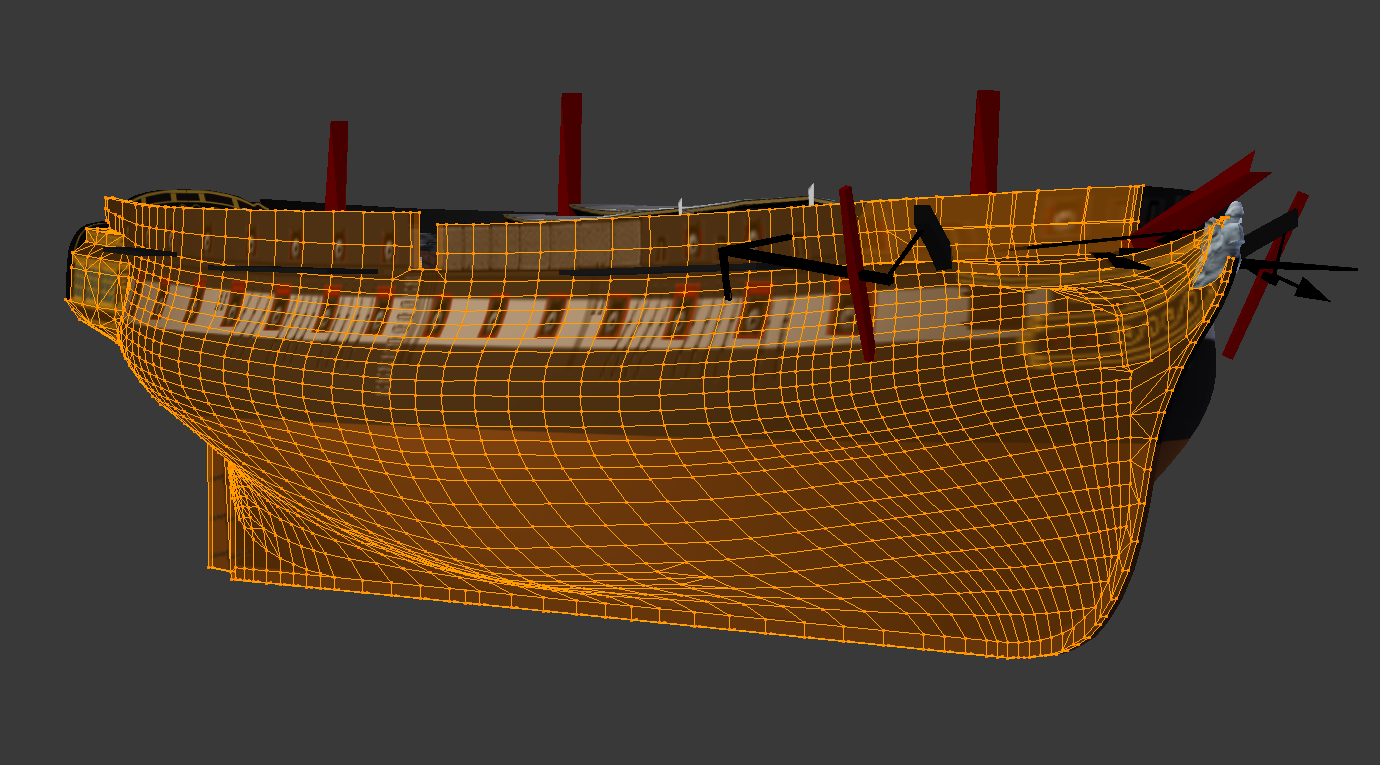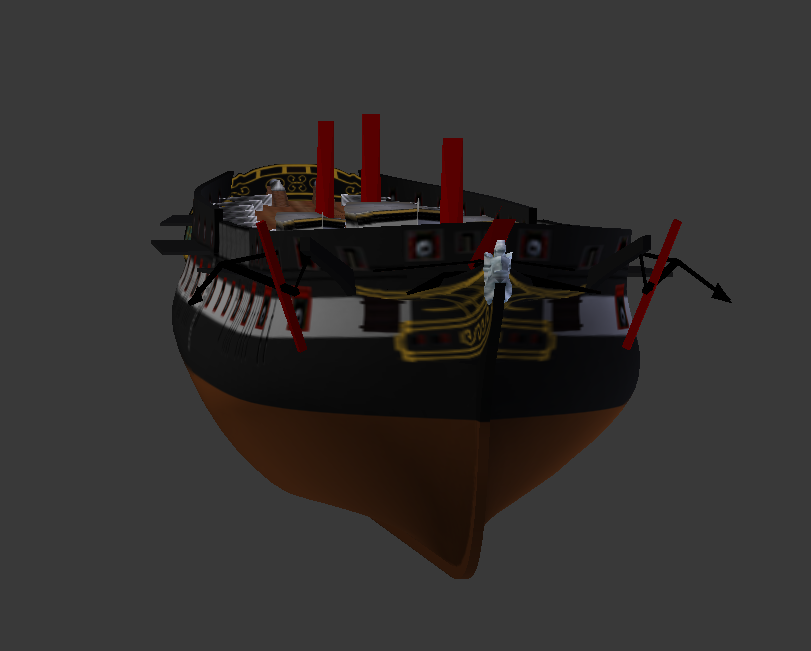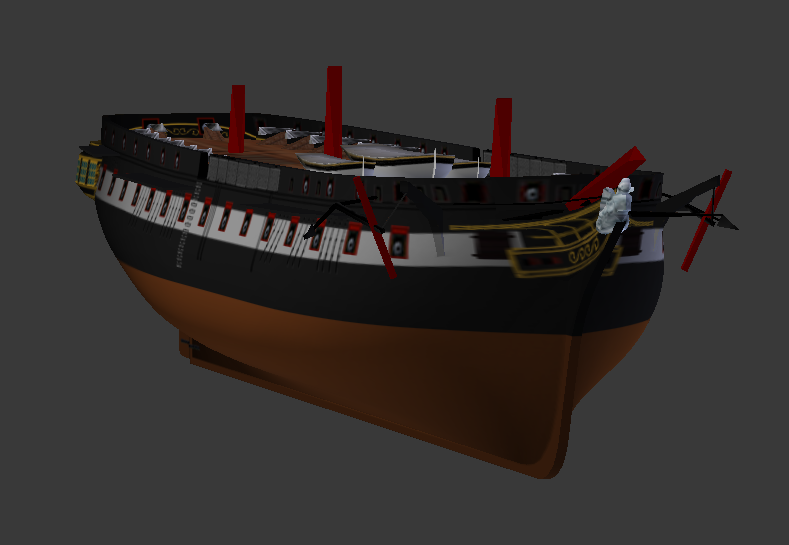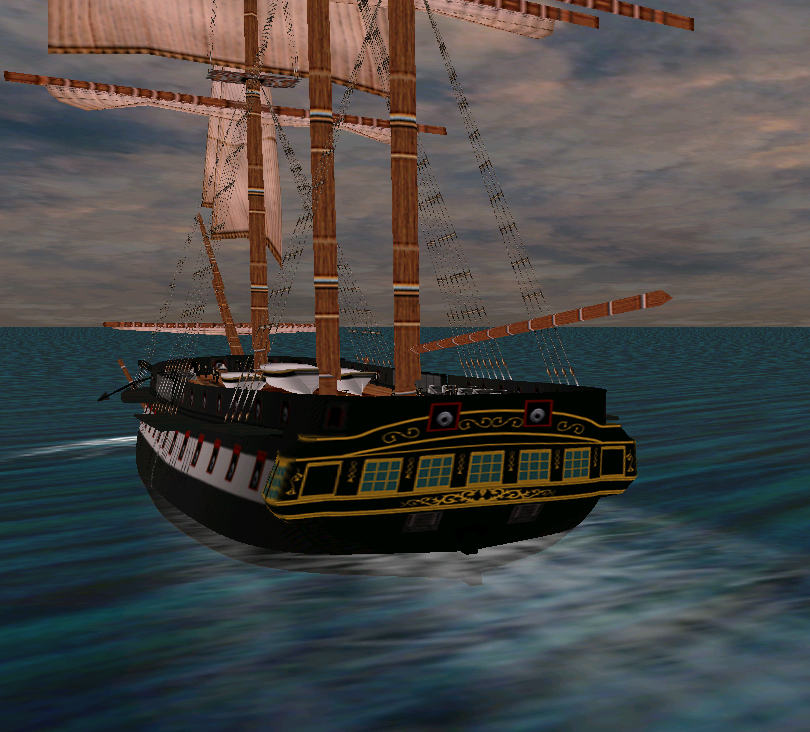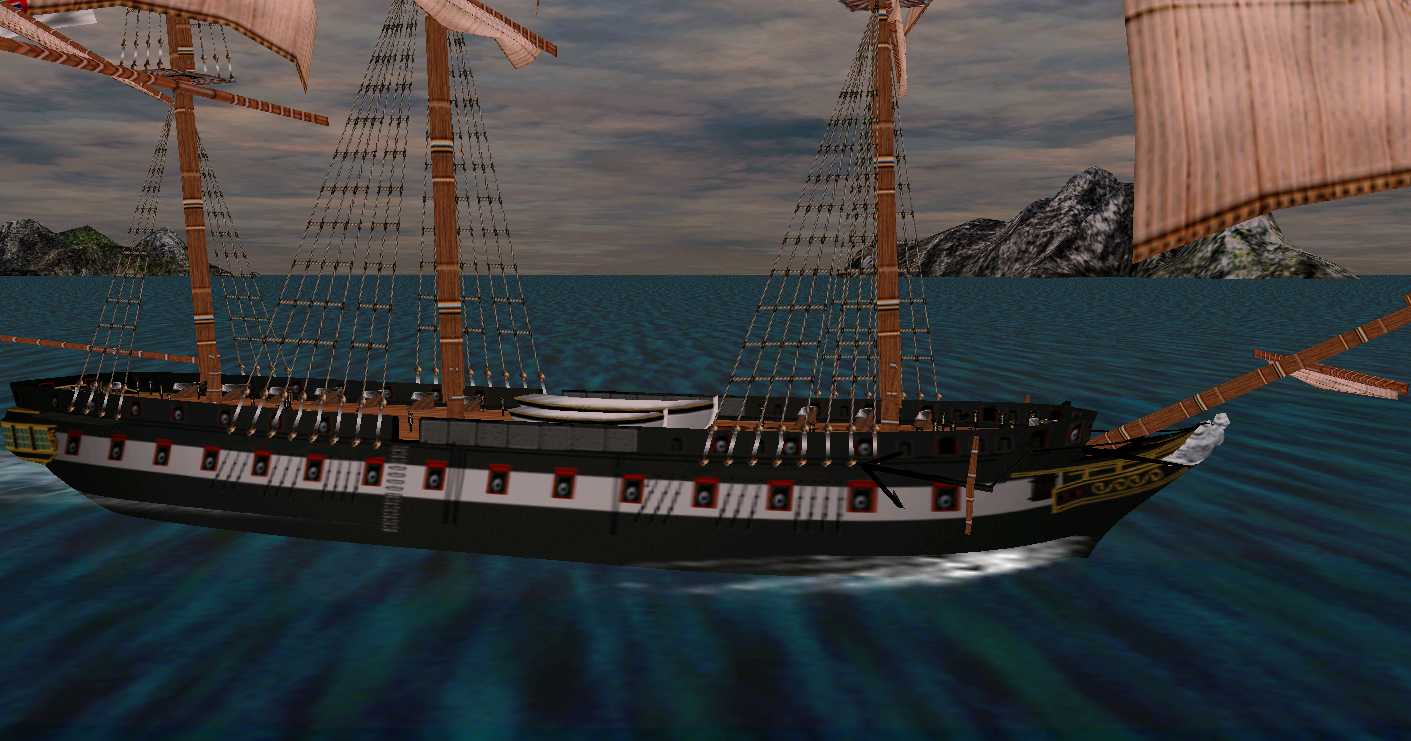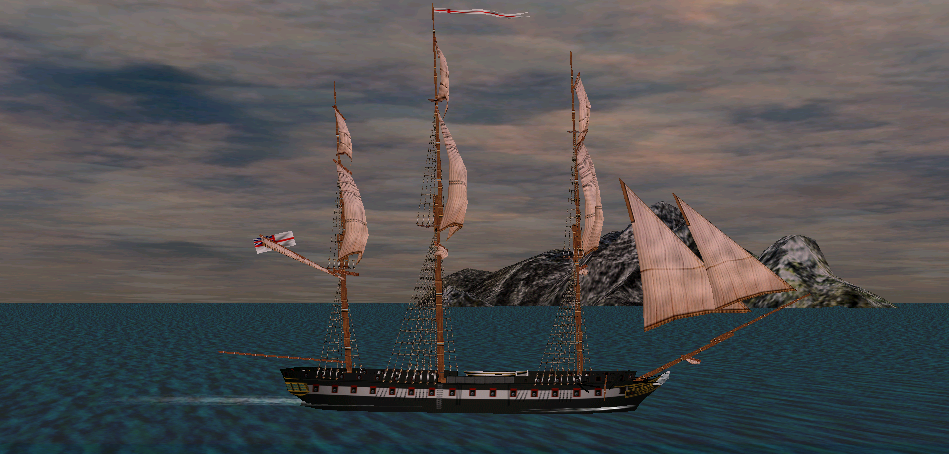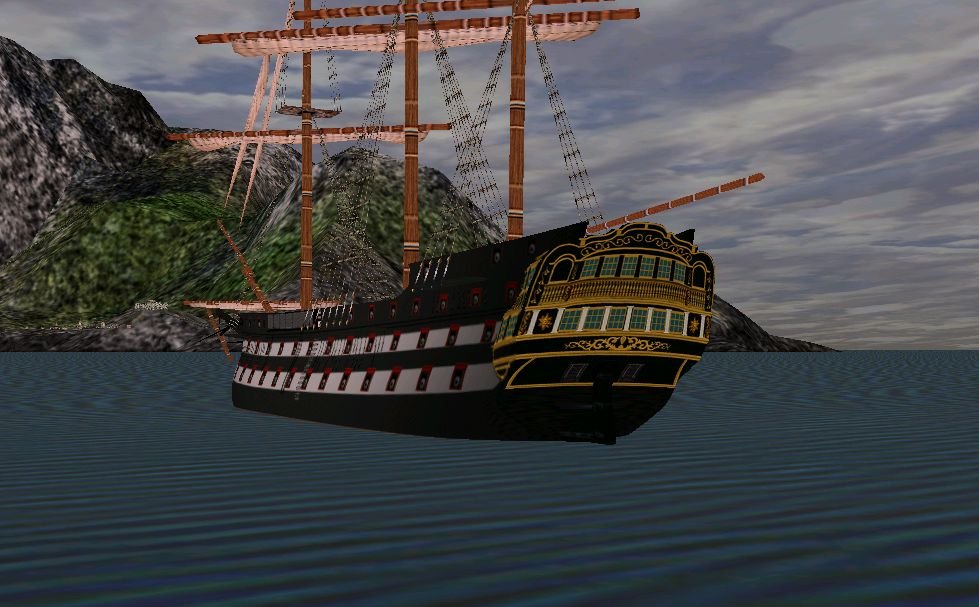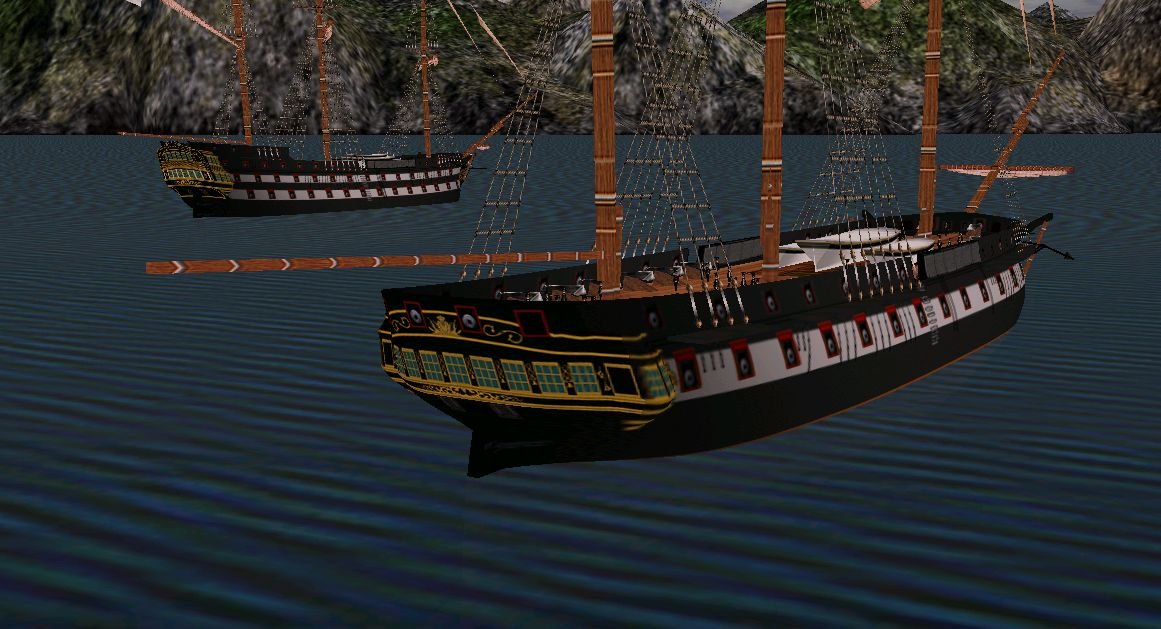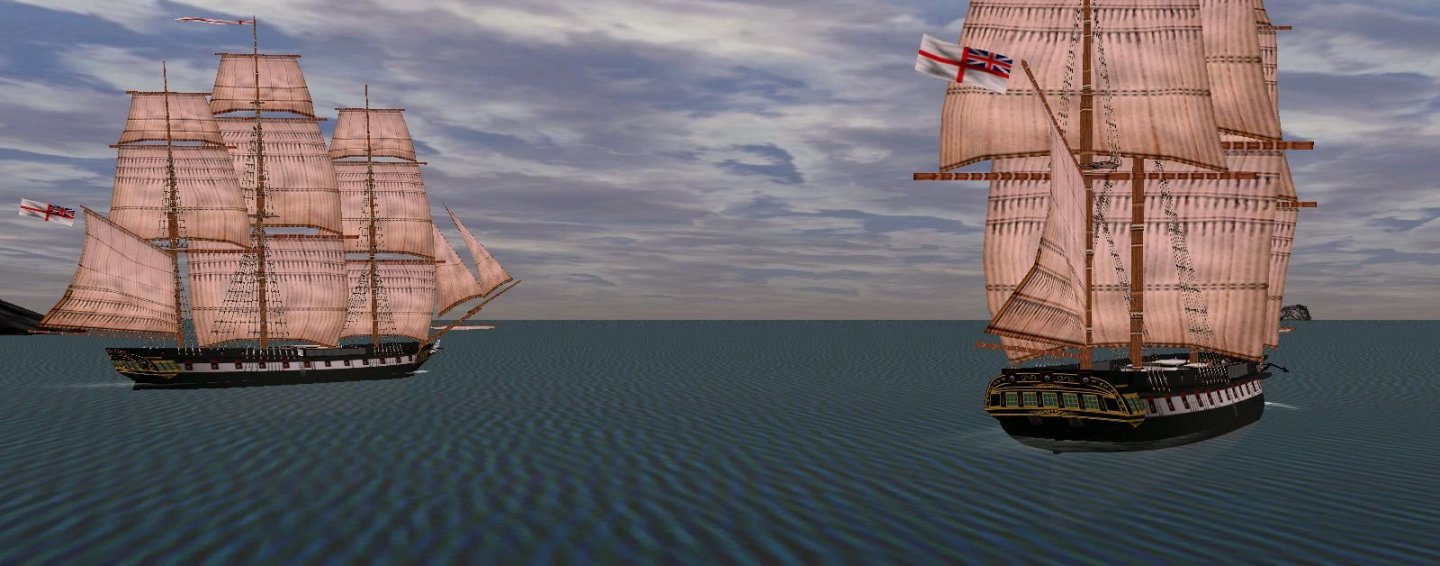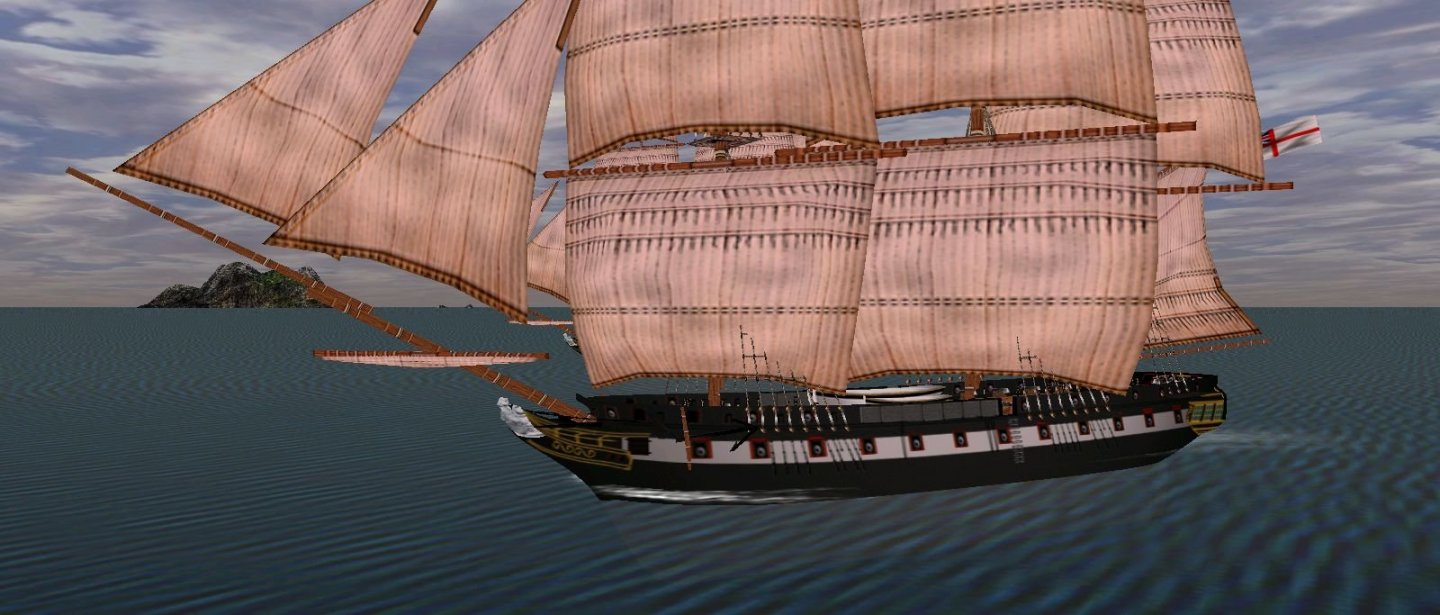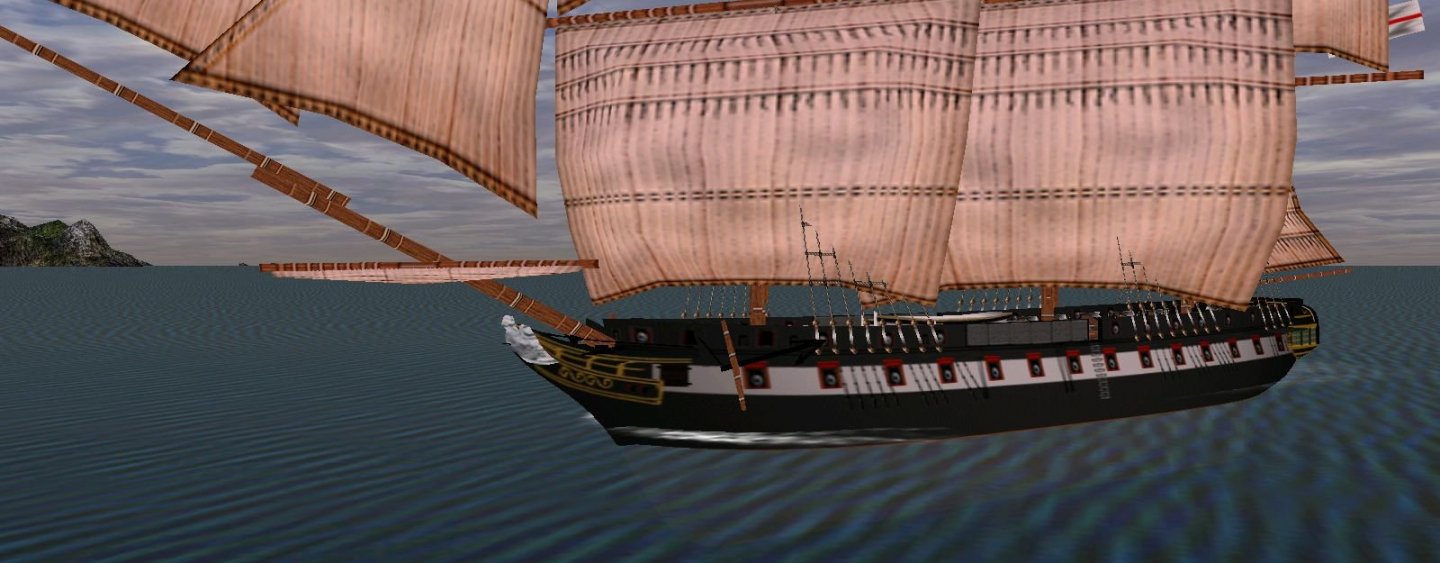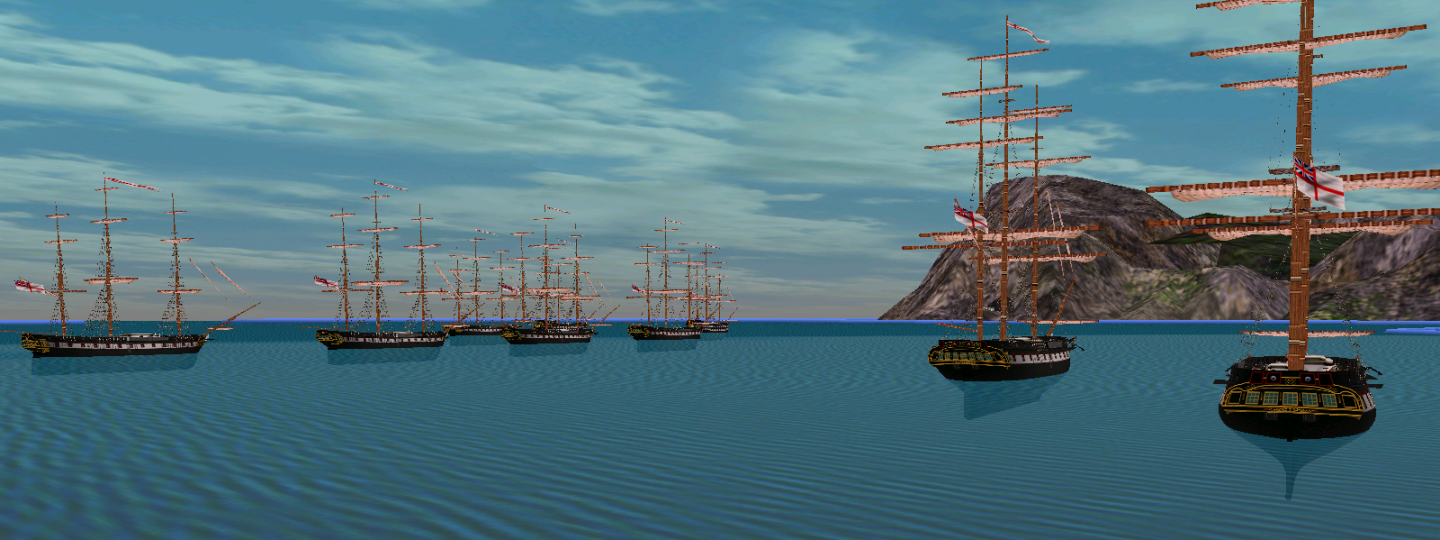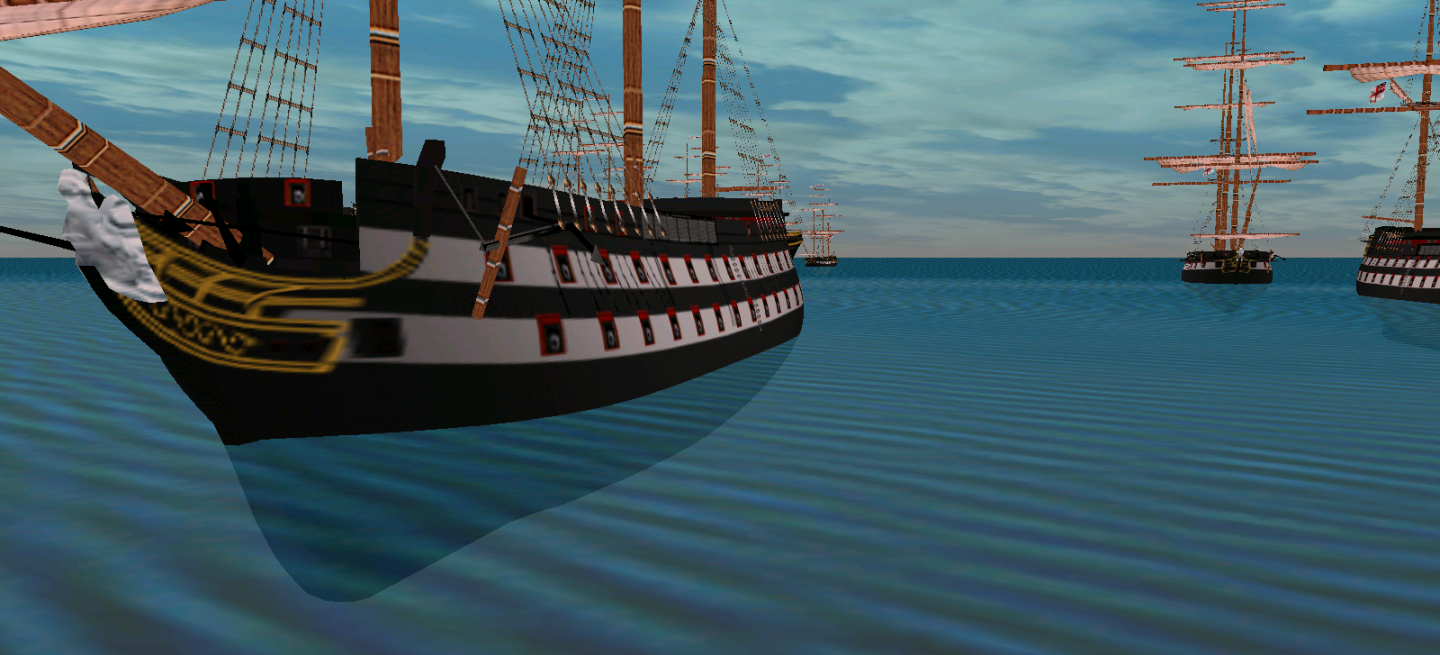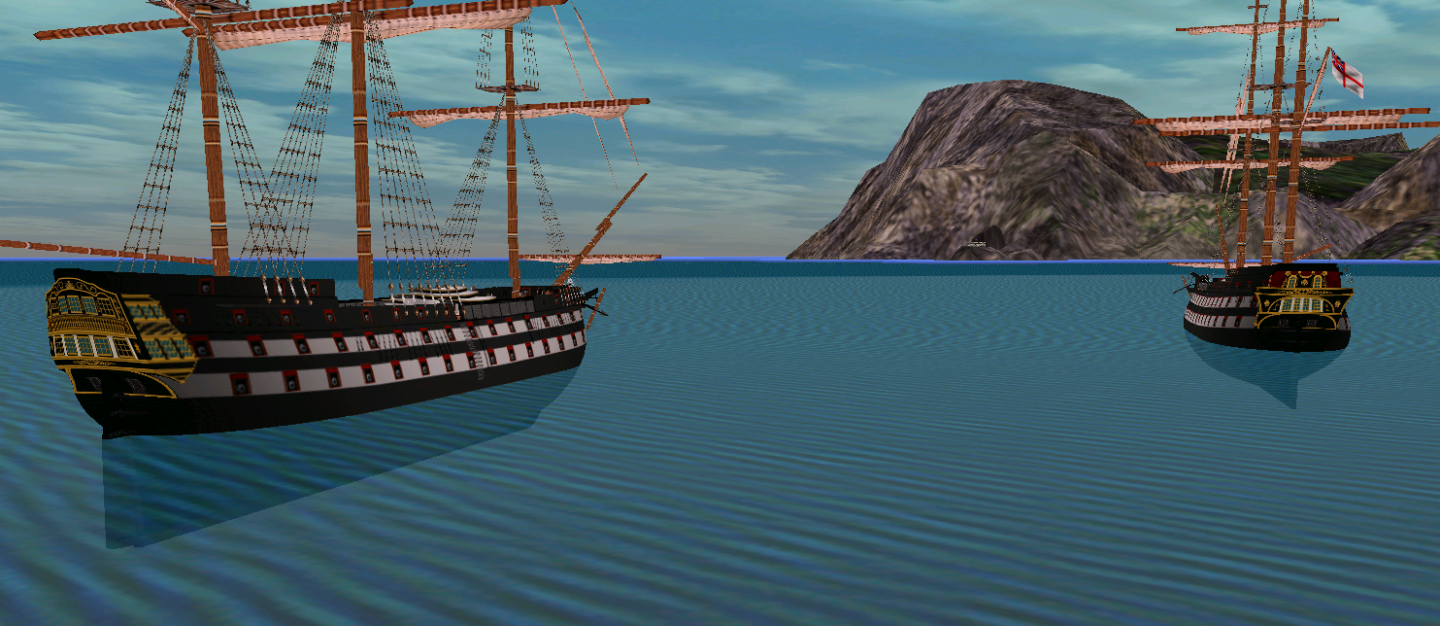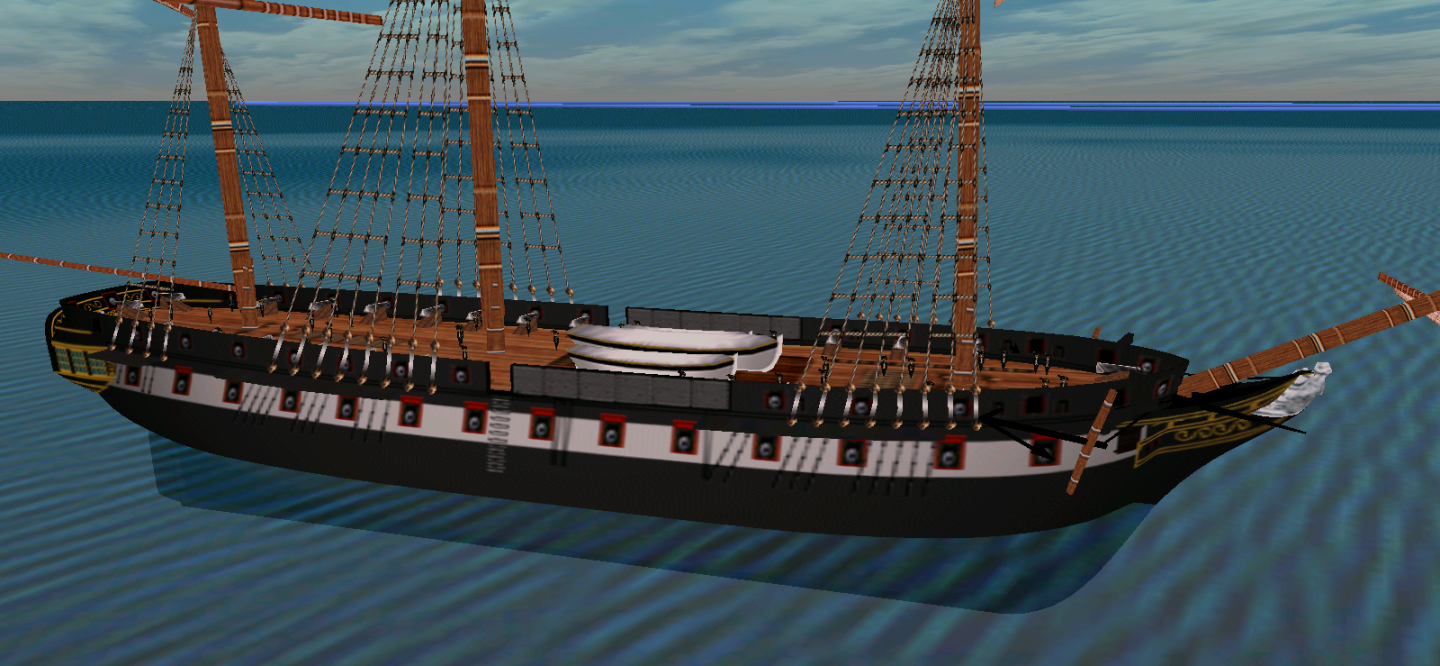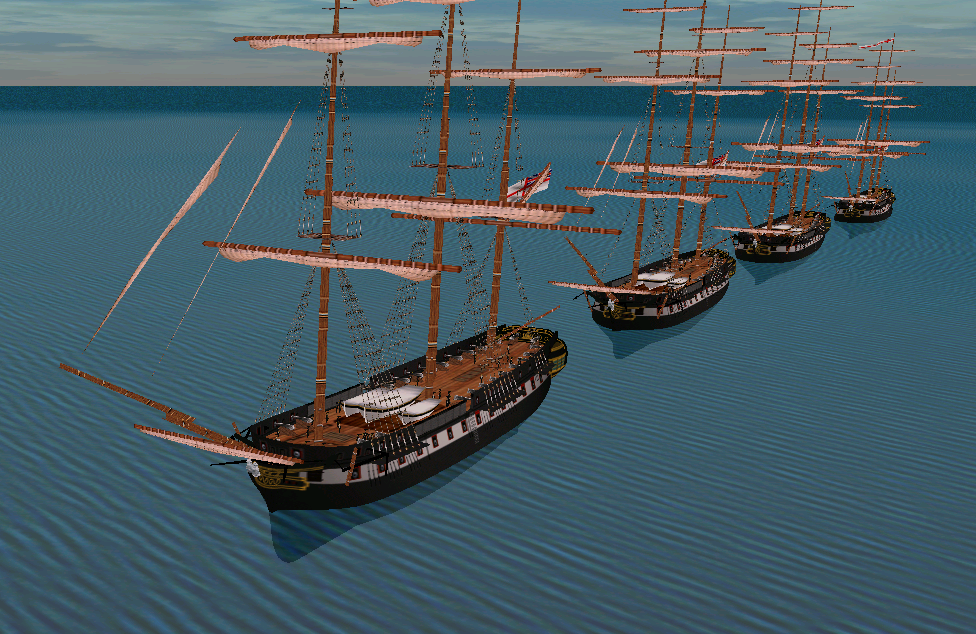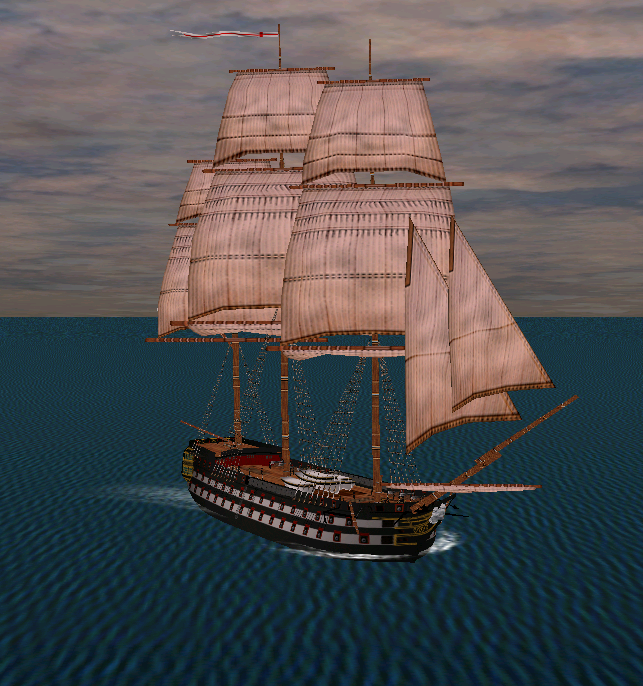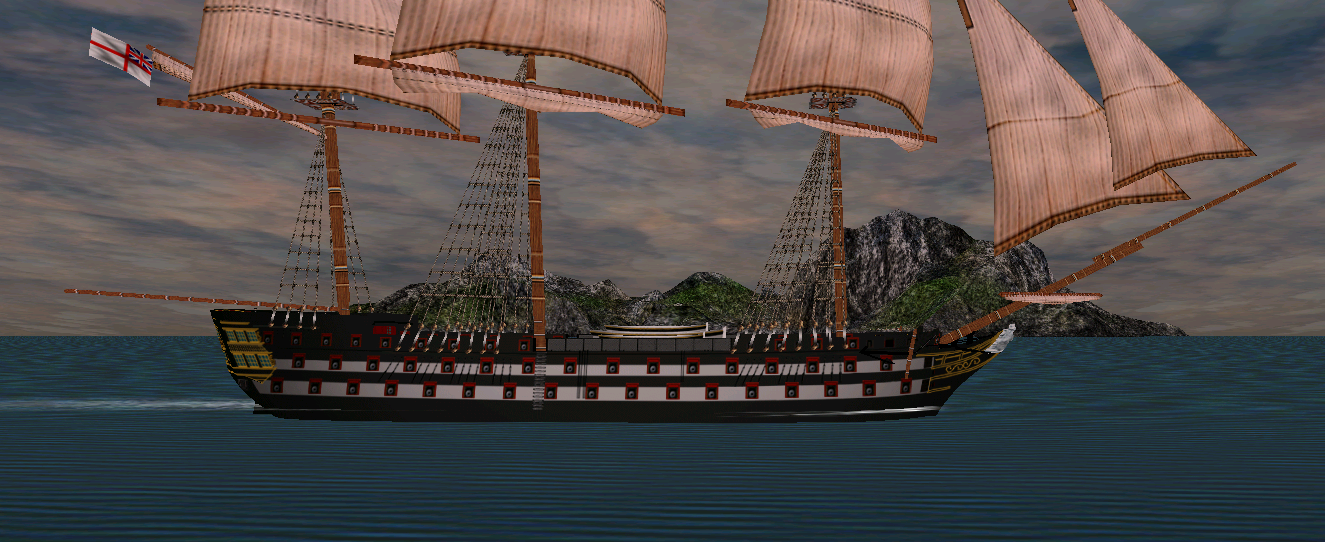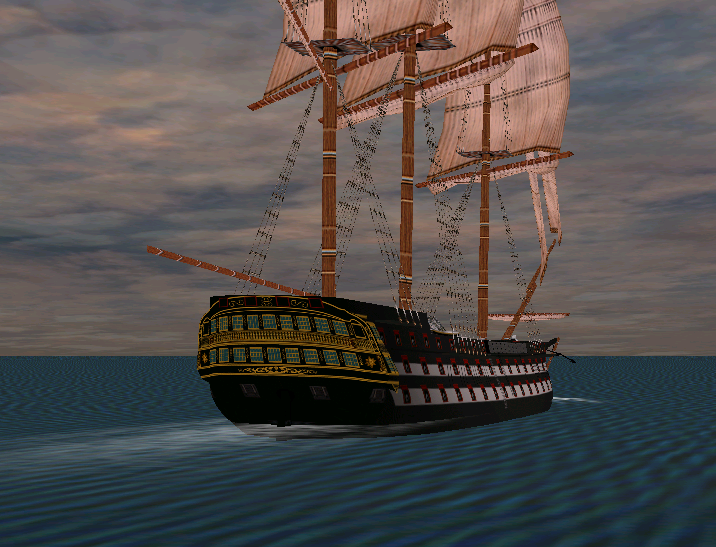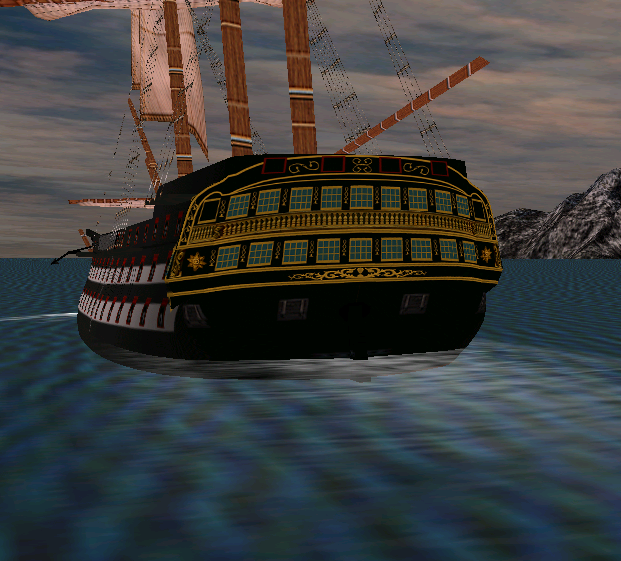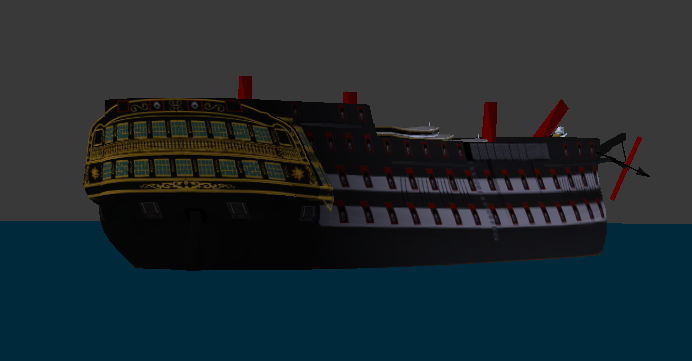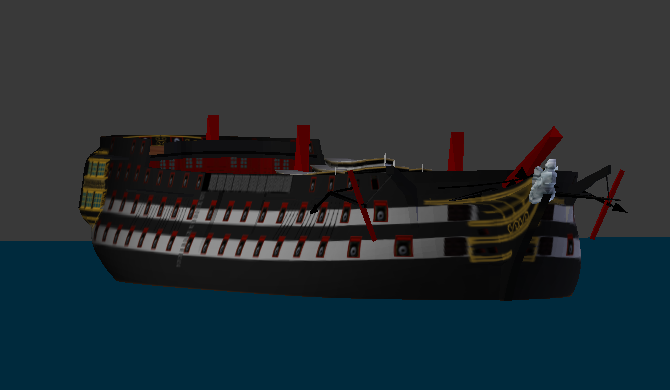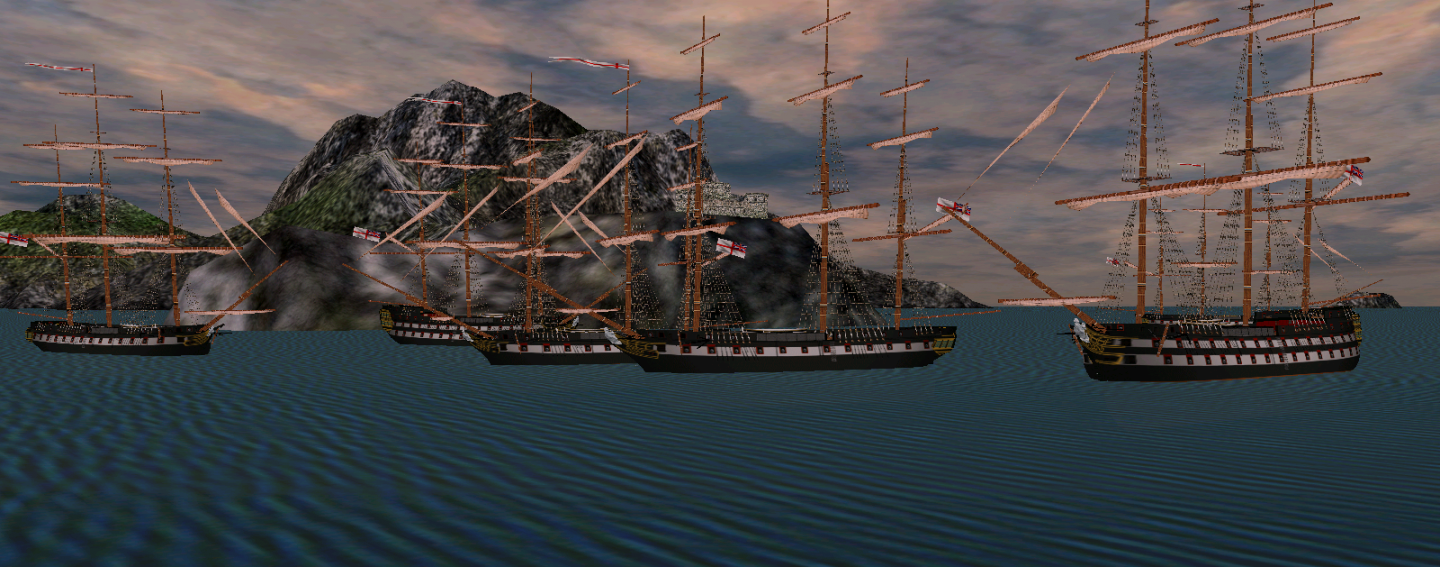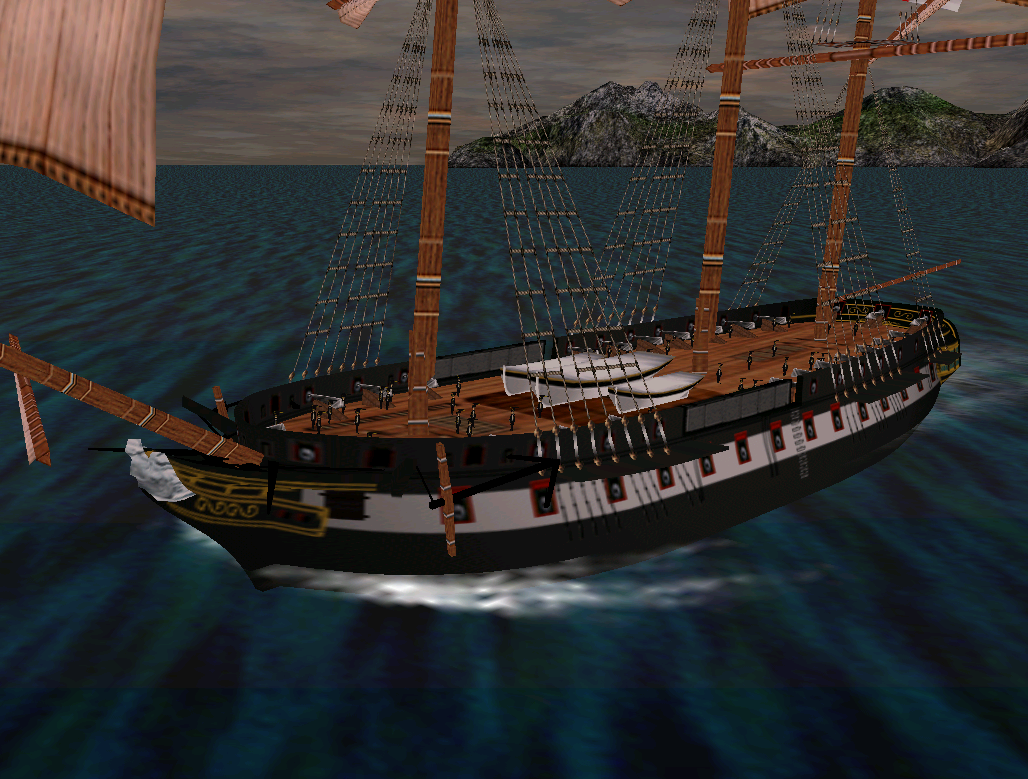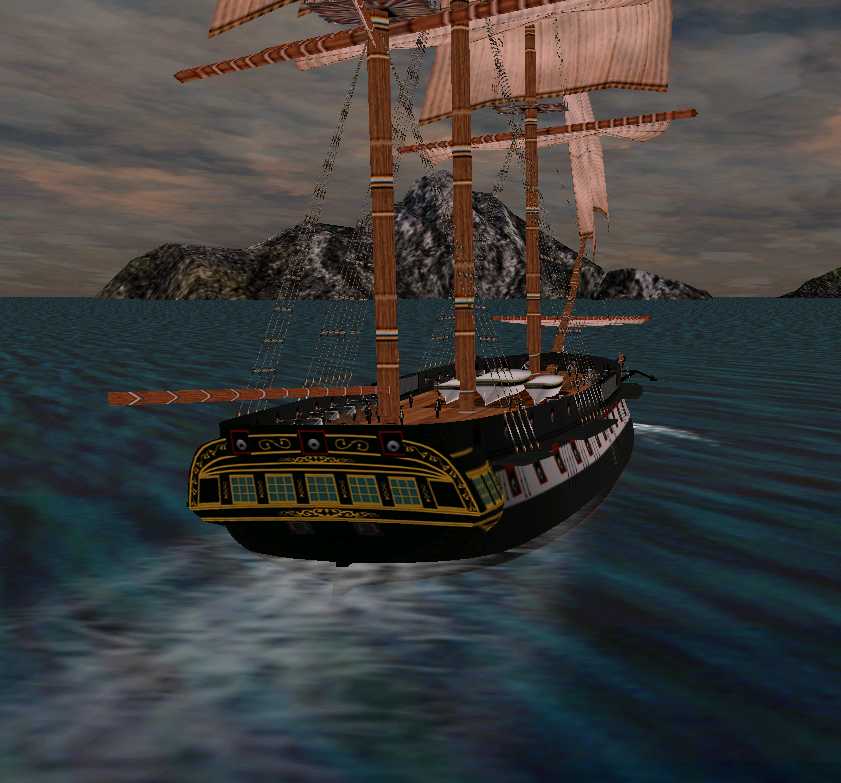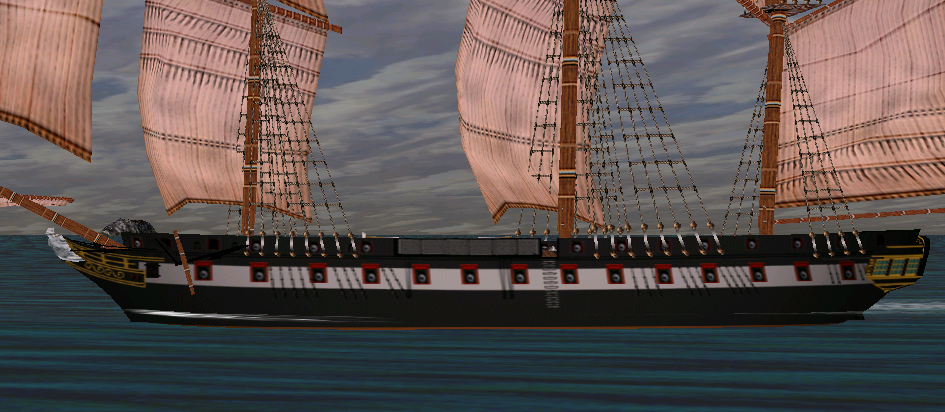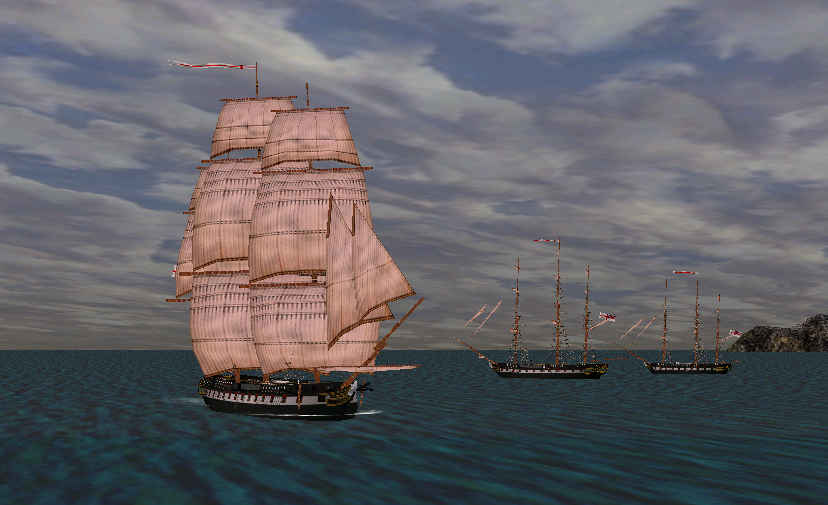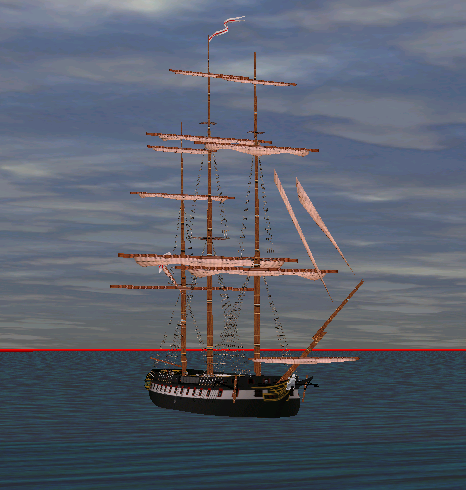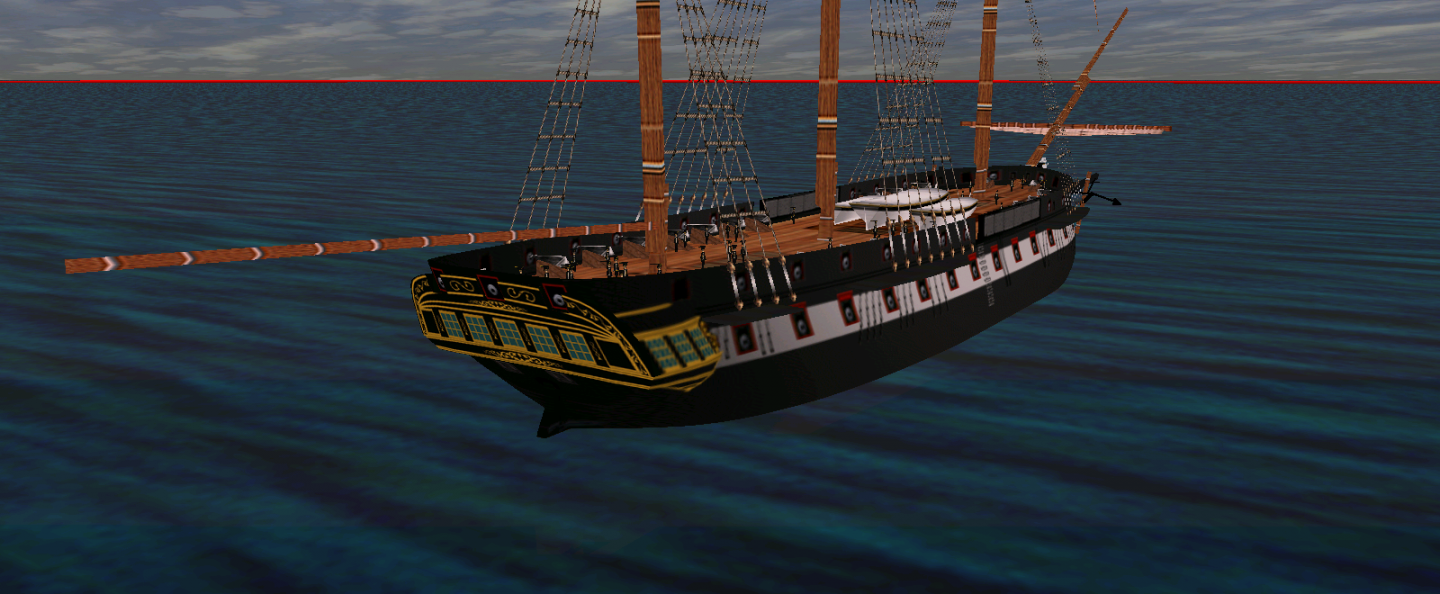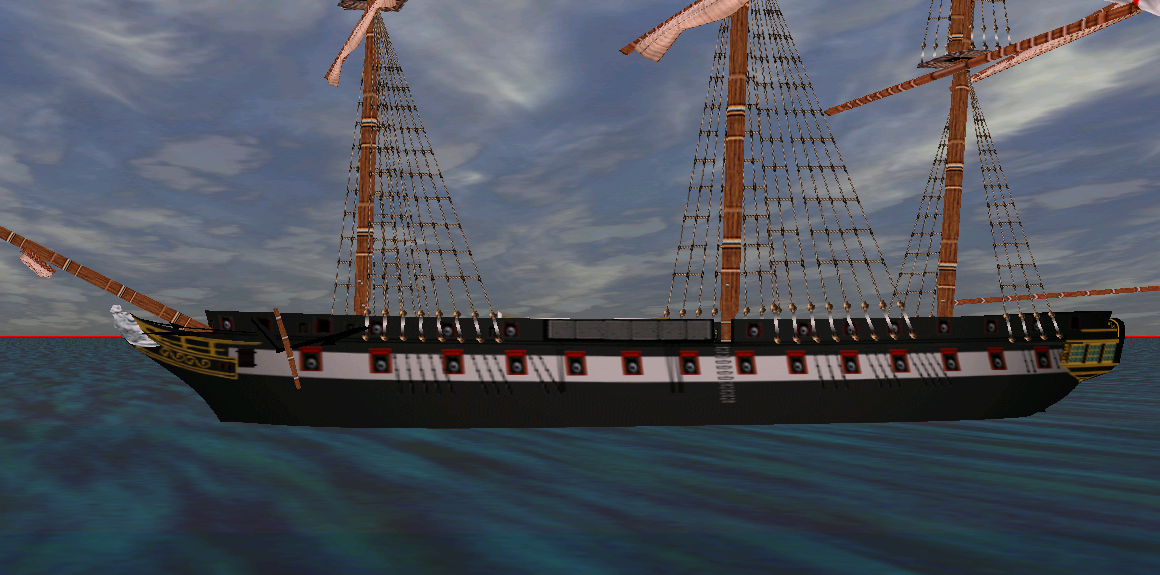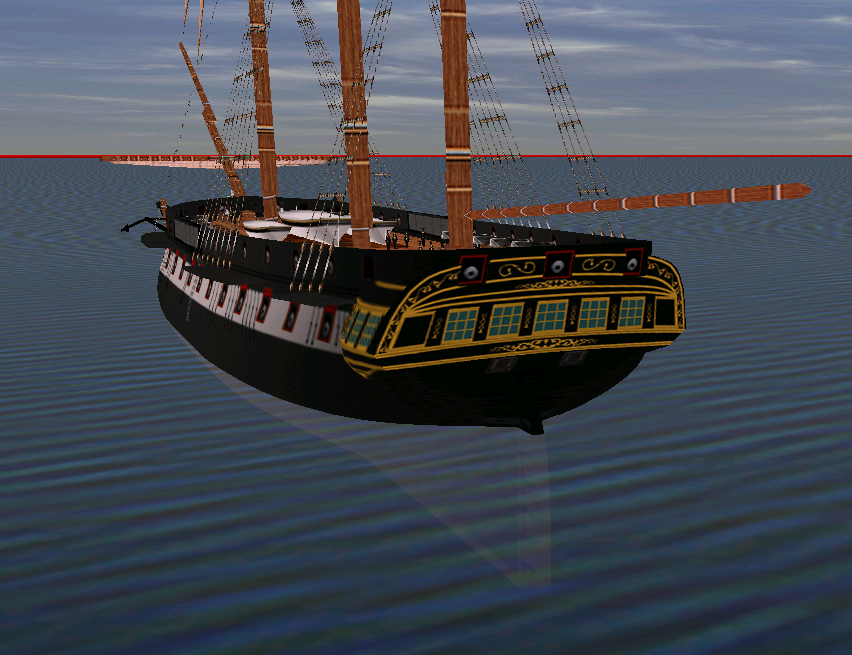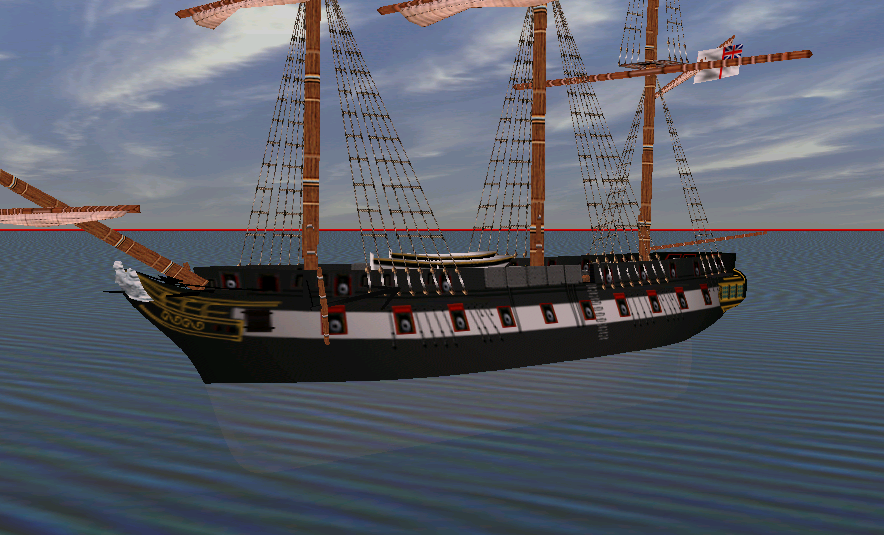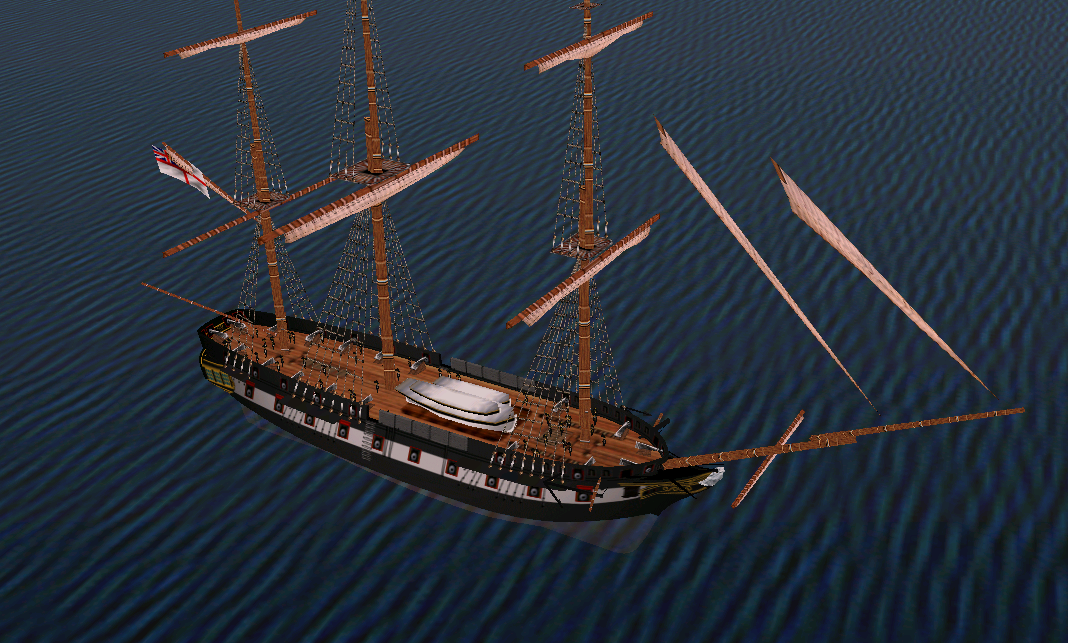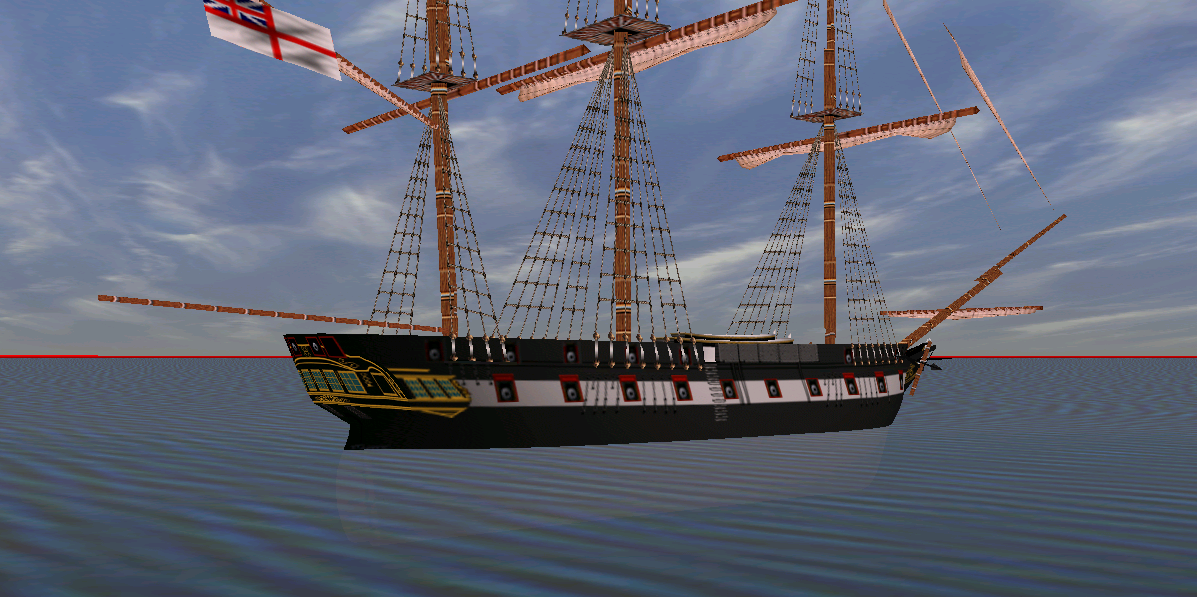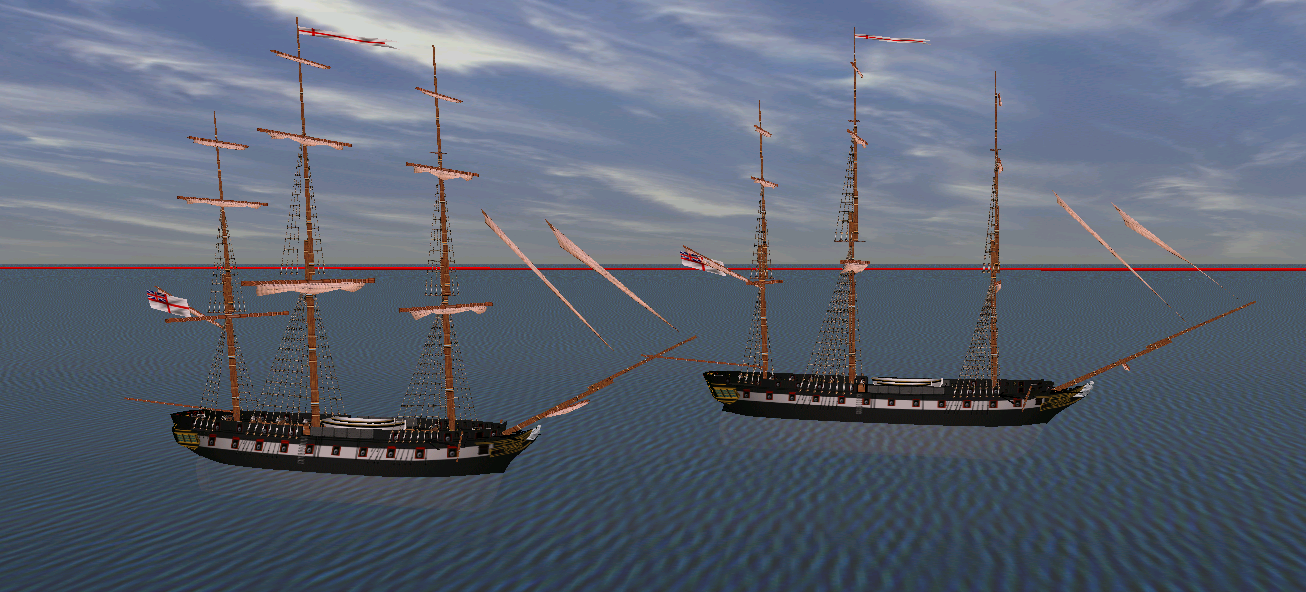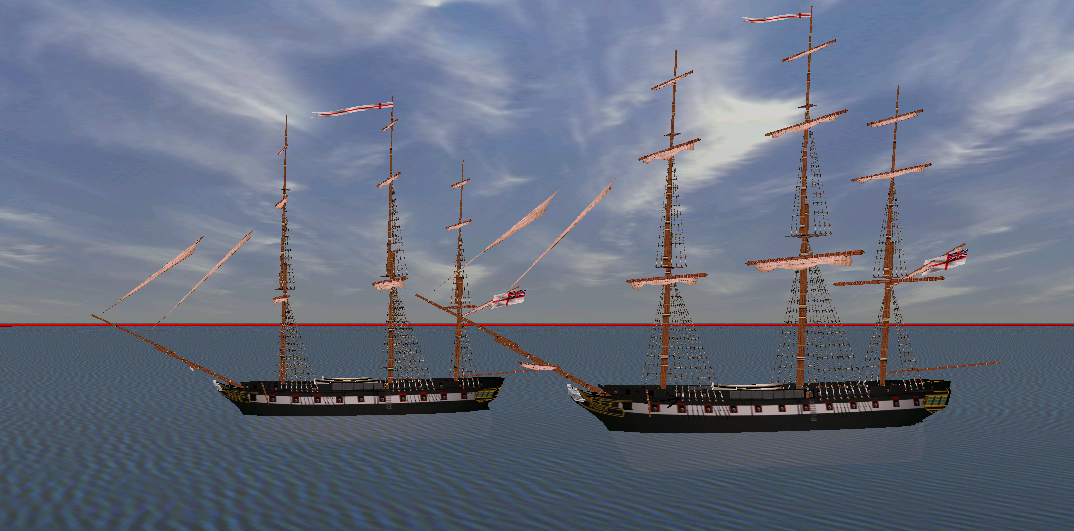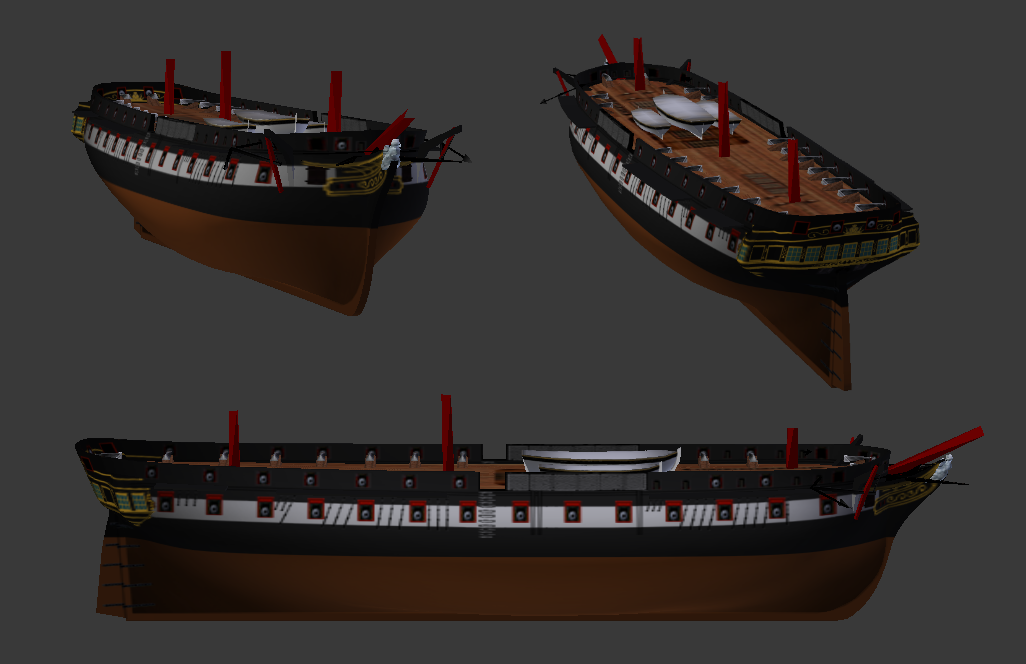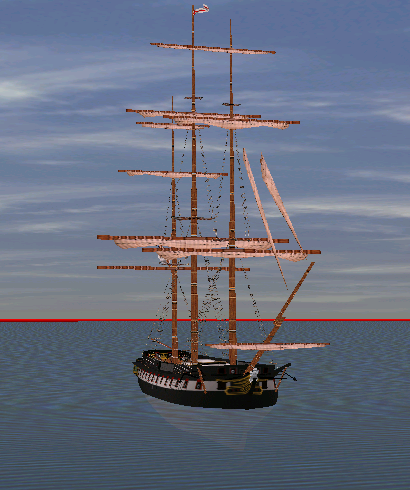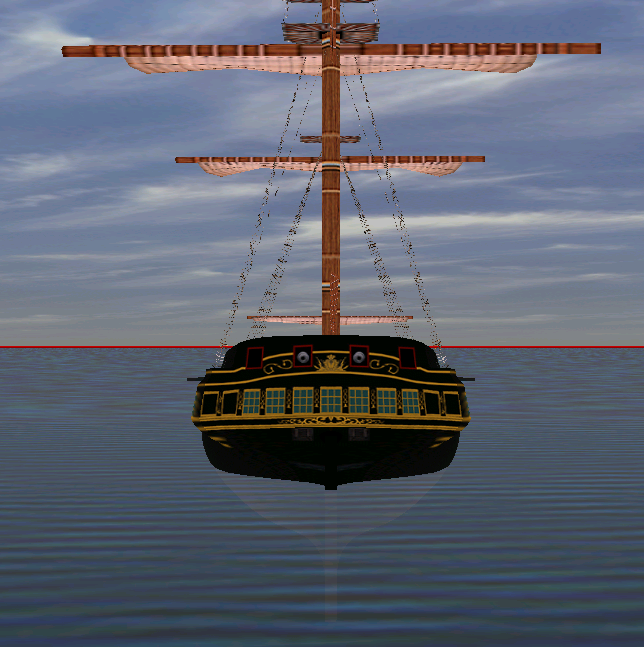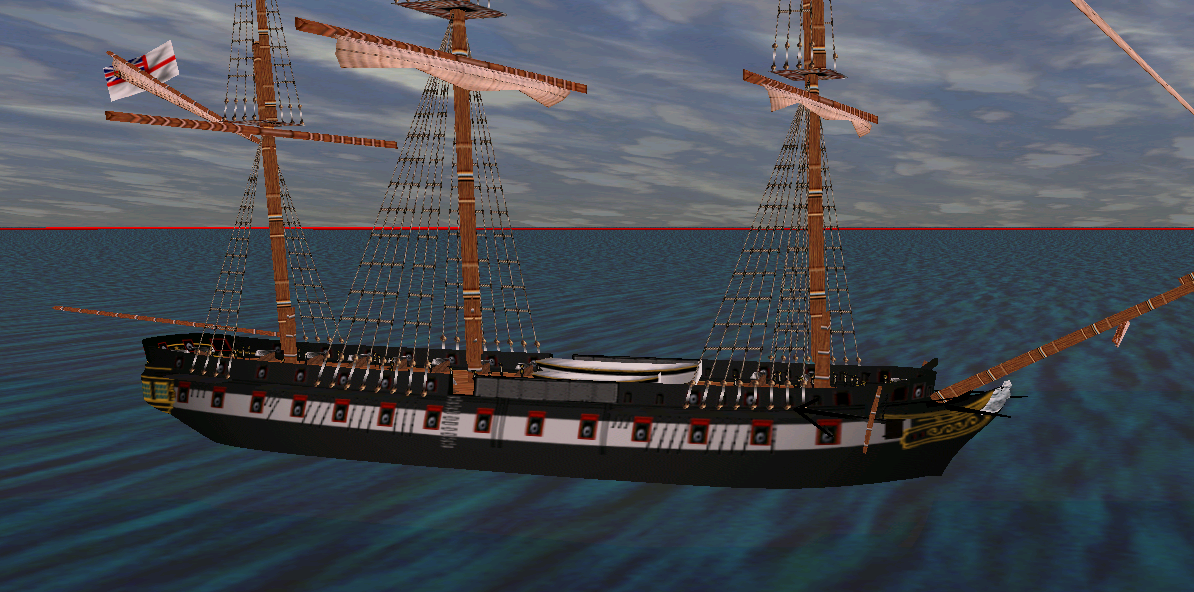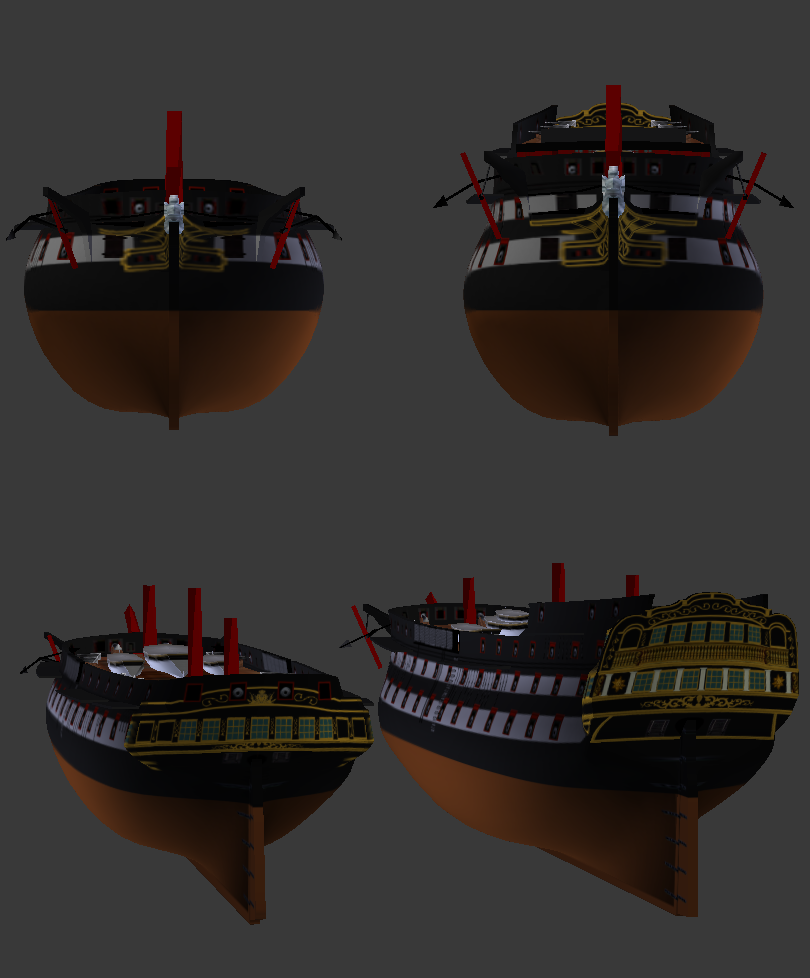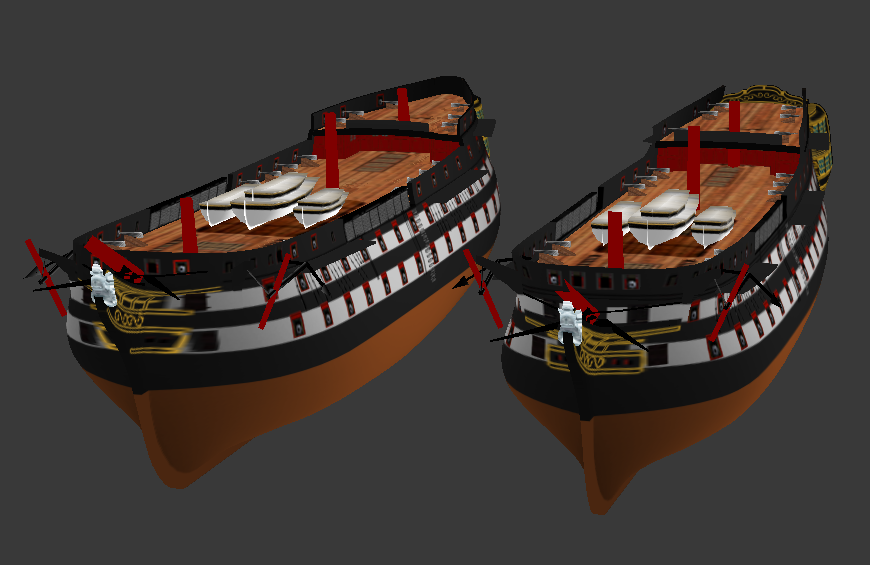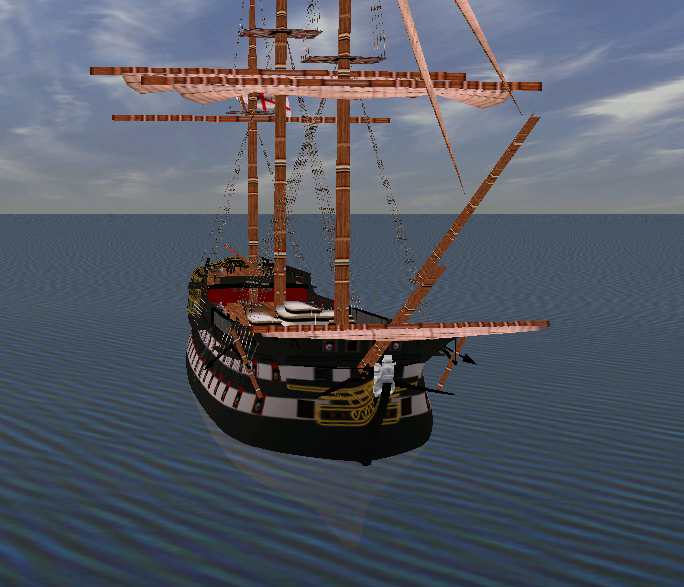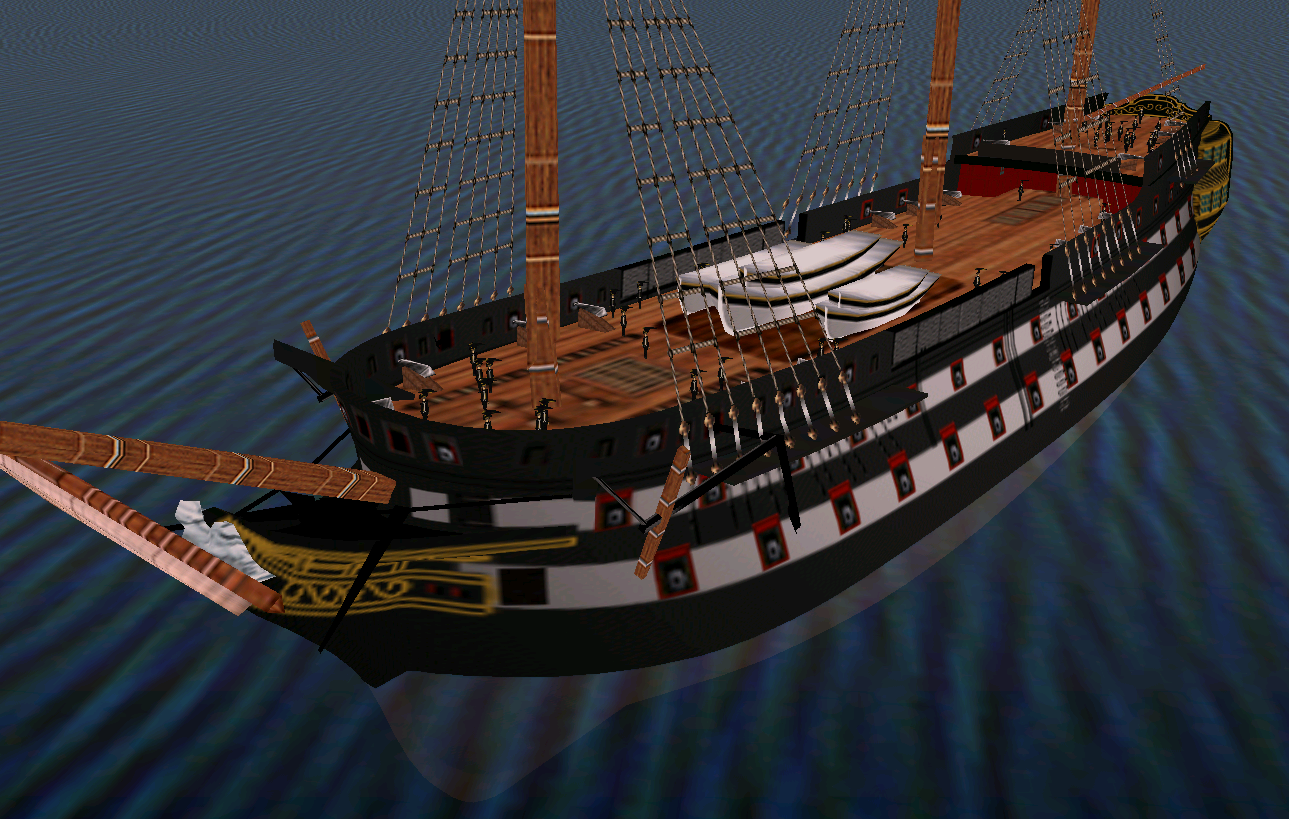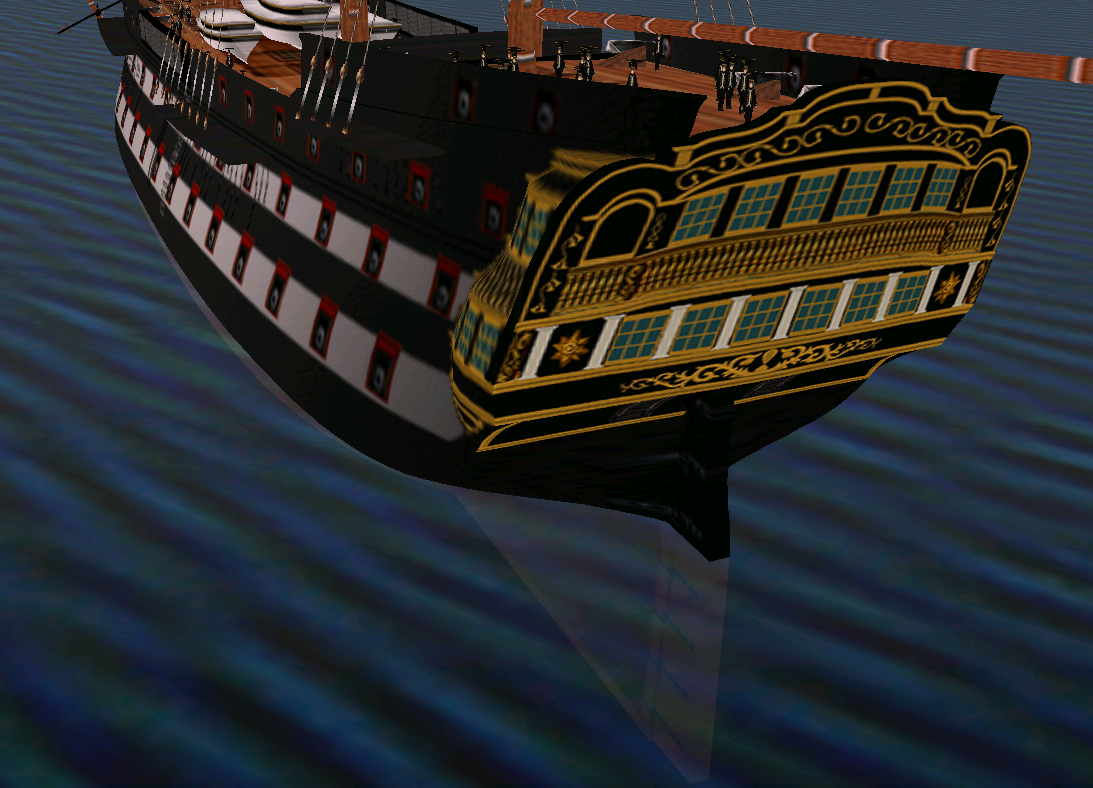-
Posts
981 -
Joined
Content Type
Profiles
Forums
Gallery
Events
Everything posted by Martes
-
That's previously captured Unite, not the Surprise. As to the Surprise you can check this topic here (there is a midship cut on the linked page, although may be somewhat inaccurate, but it can be a starting point): https://modelshipworld.com/topic/5146-hms-surprise-by-navis-factorem-finished-175/page/4/
-
Completed another monstrous frigate, even larger than the Vernon: the Emerald of 1848. The model is of the original, pure sailing configuration of the ship, making her a pinnacle (more or less) of the class development before the transition to steam. The real ship and all her sisters were completed as steam screw frigates.
-
Thanks The chosen style of virtual block models keeps the models simple enough to be able to finish them relatively quickly and be able to perceive the designs and the ways they developed one from the other, the evolution I find most fascinating. And they work, turn, sail and fire. Also, I am constantly tinkering with the ships until I am satisfied with their look or in case I find some new information or picture, and their appearance changes slightly from the posted screenshots, so here is a bunch of more updated screenshots (shallow and calm water allows to see the underwater forms):
-
The Albion is complete and tested under sail. Like all the ships from the period, she was somewhat difficult, because of the amount of modifications the class was subjected to. The gunports as depicted on the original plan did not match those on existing photographs of Aboukir and Exmouth, and were closer to later and slightly different Hannibal (and this was a source for endless frustration) but in the end I was able to find the specific plan for Exmouth with slightly altered scheme that did match the photographs. Phew. I did keep the original stern, though.
-
And to think that Britain could have had two preserved ships on a scale of Wasa...
-
It's complicated. As far as I recall, there were even some cases when a ship-sloop was "promoted" to a frigate along with her commander when he received a post-rank. For example, when James Lucas Yeo was ordered by Admiral Smith to bring word of Strangford's success to Britain, this led Yeo being named to the list of post-captains. Due to his rank, Confiance was reclassified as a post-ship. And later reverted back, so the classification was very contextual. Brig-sloops and ship-sloops referred only to the rigging, the rate of the ship in this case remained the same. Cruizer with 2 masts would be referred as a brig-sloop, and with 3 - a ship-sloop. There was also a difference between flush-decked (with no covered gun deck) and quarterdecked (miniature frigate) sloops, but, again, this did not affect the rate of the ship in British classification. The only difference, brig-rigged sloop couldn't become a frigate, while a ship-rigged could under certain circumstances.
-
Another ship in my "monstrous frigate" series: the HMS Vernon (1832): Considered at that time an experimental frigate, she was very large (similar in size to 80-gun ship), and one of the first to be constructed with some ergonomics in mind (space between decks increased to 7 feet, for example), and carried her guns at 10 feet above the waterline. The stern is also interesting - it's actually an extended round (elliptic) construction with a very conservative sternboard attached to it to make the appearance more classic. I have a weakness for the works of William Symonds, apparently.
-
And I went into rebuilding the 74 for a reason. I used the Vindictive plans on the hull of the Colossus (which will explain a slightly different gunport arrangement and a straight stem). The elaborate semi-elliptic stern with hanging quarter galleries is especially interesting. So we have a frigate of a size of a battleship, with comparable armament, built to 1830's specification over a hull with lines designed in 1740's. Lacks only steam engine for complete madness, and even that's not impossible. For me it was a long dream, to actually and properly razee something Interesting, that most of the large post-war British frigates, starting with the Vernon, were, more or less, similar to those converted frigates, both in size and in armament, as if the Admiralty, after long decades got the idea that it just may be easier to design a large frigate from the beginning, than to build a two-decker and then cut it.
About us
Modelshipworld - Advancing Ship Modeling through Research
SSL Secured
Your security is important for us so this Website is SSL-Secured
NRG Mailing Address
Nautical Research Guild
237 South Lincoln Street
Westmont IL, 60559-1917
Model Ship World ® and the MSW logo are Registered Trademarks, and belong to the Nautical Research Guild (United States Patent and Trademark Office: No. 6,929,264 & No. 6,929,274, registered Dec. 20, 2022)
Helpful Links
About the NRG
If you enjoy building ship models that are historically accurate as well as beautiful, then The Nautical Research Guild (NRG) is just right for you.
The Guild is a non-profit educational organization whose mission is to “Advance Ship Modeling Through Research”. We provide support to our members in their efforts to raise the quality of their model ships.
The Nautical Research Guild has published our world-renowned quarterly magazine, The Nautical Research Journal, since 1955. The pages of the Journal are full of articles by accomplished ship modelers who show you how they create those exquisite details on their models, and by maritime historians who show you the correct details to build. The Journal is available in both print and digital editions. Go to the NRG web site (www.thenrg.org) to download a complimentary digital copy of the Journal. The NRG also publishes plan sets, books and compilations of back issues of the Journal and the former Ships in Scale and Model Ship Builder magazines.


